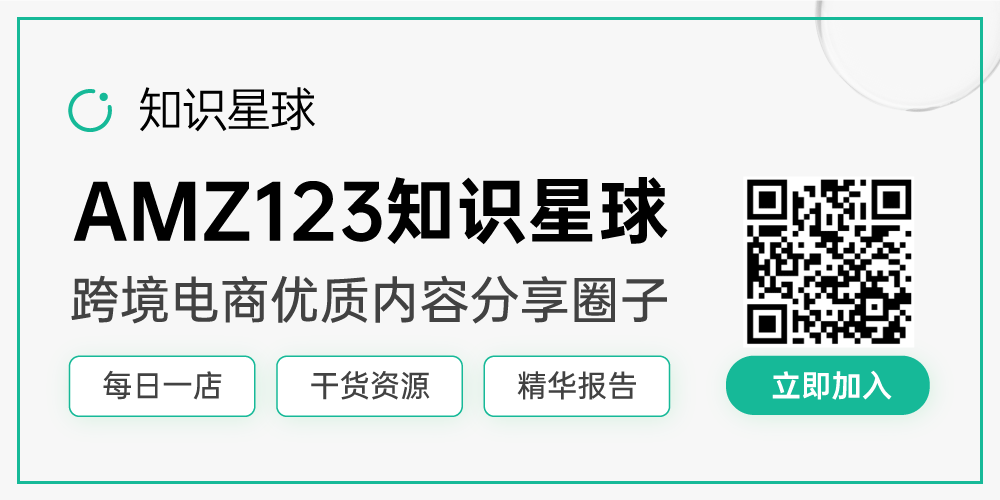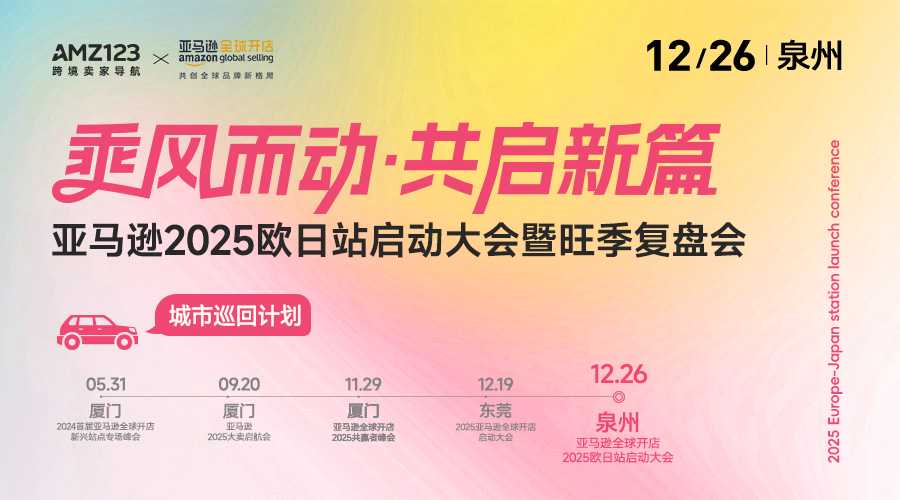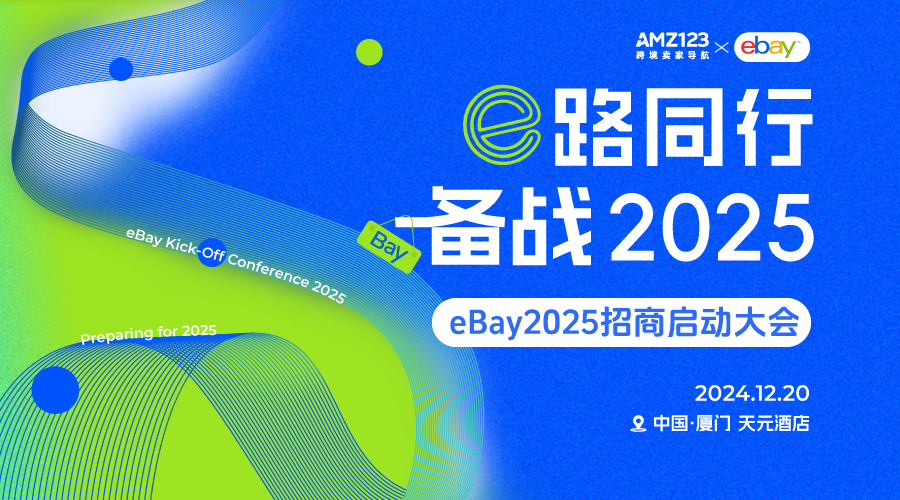Moss:关于亚马逊Review测评,我有话要说!

最近,市面上非常多关于review测评的文章和工具纷纷涌现,感觉现在已经和以往不同,以往是找不到review测评的渠道,做review测评的也就那么几家,那么几种方法,妥妥的供给小于需求。但是现如今呢,基本上做review测评的服务商简直是满天飞,有做机器刷单测评的,有通过Facebook刷单测评的,有玩私域流量的,简直就是八仙过海各显神通。
但是呢,资源过剩的时代其实还不如资源贫瘠的时代,因为选择太多了本身就是一个巨大的难题,资源一旦多了,靠谱的肯定没几个,本来就是违规生意,大部分人都是抱着捞一笔就跑的心态,加上跨境圈本来就很浮躁了,导致卖家和服务商都不是很理智,整体都是一锤子买卖的想法居多,何况这本来就是一个适合一锤子买卖的生意,要知道做review测评生意的服务商即使有再牛逼再安全的技术,谁又敢说自己是长久的生意呢?可能一夜之间就被姐夫摧毁殆尽了。
所以,今天我不想和大家聊获取review的方法,这些之前聊太多了,今天主要想和大家讲一下亚马逊后台关于review的guidelines和Terms of Service, 也就是亚马逊关于review的所有官方规定,想必这一块关注的卖家也很少,很多人都是脑子里面有一些概念,什么能做,什么不能做,这些概念都是来源于一些公众号或者口耳相传经验之谈,其实这些都是非常不准确的,亚马逊后台规则具体是怎么样的,其实很少人去关注,这样其实是不对的!
我今天讲这个主要有两层目的:第一个目的是想让大家知道关于亚马逊review,什么不能做,什么可以做,这样才能够更好的支持我们现在正在做的刷单测评的工作,特别是对于想要长久耕耘亚马逊的卖家来说尤为有意义;另一个目的就是亚马逊坚决禁止我们做的一些条款下面,我们用力去研究,反而就是我们可以去突破的点,也是黑科技的来源。举个例子大家就明白了,我们之前做SEO的时候,去国外参加Google举办的大会,同行的有莆田的哥们,我们在聊一般去大会听什么,按照正常人的逻辑都是去听官方未来的方向,政策聚焦点等等这些。但是呢,莆田哥们从来不看这些,他们只看Google官方严厉禁止的一些条款,类似亚马逊的seller prohibited activity,越不让做的,越往死里研究,这就是所谓黑科技的源头所在了。

Amazon encourages buyers to review the products they like and dislike to help customers make informed decisions about the products they purchase.
For answers to common questions about customer product reviews, see Answers to questions about product reviews.
To ensure that reviews remain helpful, sellers must comply with our Community Guidelines. For example, you cannot offer compensation for a review, and you cannot review your own products or your competitors’ products. You can ask buyers to write a review, but you cannot ask for positive reviews or ask a reviewer to change or remove their review. If you believe a review does not comply with our Community Guidelines, click on the Report Abuse link next to the review. As sellers and manufacturers, you are not allowed to review your own products, nor are you allowed to negatively review a competitor’s product.
Inappropriate product reviews
The following are examples of prohibited activities. This is not an all-inclusive list.
●A seller posts a review of their own product or their competitor’s product either in their own name or as an unbiased buyer.
●A seller offers a third party a financial reward, discount, or other compensation in exchange for a review on their product or their competitor’s product. This includes services that sell customer reviews and websites or social media groups with implicit or explicit agreements or expectations that an incentive is contingent on customers leaving a review.
●A seller offers to provide a refund or reimbursement after the buyer writes a review (including reimbursement via a non-Amazon payment method).
●A seller uses a third-party service that offers free or discounted products tied to a review (for example, a review club that requires customers to register their Amazon public profile so that sellers may monitor their reviews).
●A family member or employee of the seller posts a review of the seller’s product or a competitor’s product.
●A seller offers a refund or other compensation to a reviewer in exchange for changing or removing their review.
●A seller only asks for reviews from buyers who had a positive experience and attempts to divert buyers who had a negative experience to a different feedback mechanism. This includes cases where the customer proactively reaches out to the seller to express satisfaction with their products.
●A seller creates a variation relationship between products that are not actually related to each other in order to boost a product’s star rating.
●A seller inserts a request for a positive Amazon review or an incentive in exchange for a review into product packaging.
●A seller manipulates the ‘Helpful’, ‘Not Helpful’, or ‘Report Abuse’ features on any review on his or his competitor’s products.
Note: References to ‘seller’ here includes all the seller’s employees and third party partners.
You can ask for reviews from customers who purchased your products off Amazon. However, note that all the customer reviews policies apply to these reviews as well.
Note: Violation of our policies may also violate applicable laws, which can lead to legal action and civil and criminal penalties. If you violate our policies, we may disclose your name and other related information publicly and to civil or criminal enforcement authorities.
We encourage you to monitor reviews regularly and reach out to customers to resolve product or service issues. However, you cannot ask customers to change or remove their review, even after an issue is resolved. Also, you can reach out to customers by replying to their review on the product detail page and asking them to contact you through Buyer-Seller Messaging to resolve their issues. You cannot reach out to buyers via other means.
在亚马逊整个TOS里面,关于review这一块的就是上面的内容部分了,我现在把它原封不动的发出来,方便大家做一个参考。下面我会选择出上述条款里面的一些重点条款来做逐一分析。目的在于告诉大家这些条款本身,能够提炼出来什么样的有价值内容,能够帮助大家少踩一些坑,总结一些不错的方法,就很值得了。

1–“Amazon encourages buyers to review the products they like and dislike…”
这句话的意思其实很简单,亚马逊是鼓励留评的,只要是真实可信的自然评价,其实多多益善!所以说,关于市面上流行的回评率需要控制在多少多少,好评率需要控制在多少多少其实意义并不大,只要你的review是真实的,留评率百分百又怎样呢?全是好评又怎样呢?高质量的获评渠道这些都不是问题,低质量的获评渠道控制得再好也会被K掉!所以大家大可不必在这留评率,好评率这些方面太过于在意,其实意义并不大,只要不特别夸张即可!
2–“You can ask buyers to write a review…but you cannot ask for positive reviews or ask a reviewer to change or remove their review.”
这里明确的说明了,站内信索评其实是合规的,只是需要注意站内信的措辞语句。另外,卖家不能够直接索要好评,也不能够让买家去更改或者移除评价。这里多说一句,很多人觉得我给那个留差评的买家退款换货了,他也很满意,这个时候我是不是能够直接找他拿个好评了,或者让他改一下评价,这里提醒一句千万不要这么做,站内信里面千万不要出现关于索要好评,或者更改,移除review的这些语句,不管买家是有多么开心,你也不能在站内信里面让他去留好评,让他去改评价,不然被抓到之后被K的可能性非常大,要知道整个站内信都被亚马逊严密监控起来了。
下面,我们总结一些可以用属于合规的站内信索评的语句,以及不能用的属于违规的站内信索评语句,现在拿出来分享给大家,希望能够对大家有所帮助:

1.Here are some examples of things you may NOT say when requesting a product review: 不可以在站内信里面用的语句:
“Will you please leave a positive review?” “Please leave a 5-star review.” “If you like our product, please leave a review.” “If anything went wrong with your order, please contact us so we can help. However, if everything went well, please leave a product review.”
2.Here are some examples of things you may say instead 可以在站内信里面用的语句:
“Will you please leave a product review?” “Please take a moment to leave a review.” “If you have had a chance to try our product, please leave a review.” “Please share your honest opinion of this product by leaving a review. [Include product review link.] Also, if you have any questions or concerns, please contact us so we can help.”
3–“As sellers and manufacturers, you are not allowed to review your own products, nor are you allowed to negatively review a competitor’s product.”
这一条大家应该比较熟悉,我们主要看后面那句话,你不允许给你的竞争对手留差评,所以我们被竞争对手留差评陷害的时候,只要能够提供切实的证据,其实是可以删掉差评的。这里有两个要点希望大家记住,第一个就是写邮件的时候尽量引用上述TOS里面的语句,说明给竞争对手写差评是违规的,写申诉邮件最好要做到引经据典,要有写议论文的觉悟,当然这里面所谓的经典就是亚马逊的TOS了,引用TOS里面的语句是申诉信成功的关键所在,也是一个好用的技巧。
另外一点就是写差评申诉邮件的时候最好就明确指出来是哪一个竞争对手做的,尽可能找到所有证据咬定一个确切的竞争对手,证据不够也可以人造一些证据,比如一些和第三方review提供商的聊天截图(说明竞争对手是和某家第三方机构联合起来黑你差评),竞争对手购买这个害人差评的渠道,这个留差评的买家号的个人信息等等这些,而不要说什么怀疑可能是谁,这一点也是很重要的。我们自己尝试过,各种真假证据混合在一起,有明确的指向某一位竞争对手,这种情况下删掉差评的几率还是挺大的!
4–“A seller offers a third party a financial reward, discount, or other compensation in exchange for a review on their product or their competitor’s product.”
现在很多所谓的review工具平台提供类似之前AMZ-tracker提供的的服务,比如在这个平台完成非常大的折扣放量或者免费放单任务以后,平台承诺你一个回评比例。这种类型的平台最好要慎重,上面这一条明确写的是违规的,而且亚马逊后续会重点打击类似平台。当然这里说一句,那些单纯跑量类似deals站点的平台,不涉及review操控是没有问题的。
5–“A seller offers to provide a refund or reimbursement after the buyer writes a review.”
这里主要是针对一些卖家在找到留差评的买家以后,通过给他操作退款,然后要求他改掉或者删除的行为。我在这里特别强调一下,如果你直接通过站内退款给买家,然后买家修改或者删除了差评,这个行为会有很大可能被亚马逊判定为review操纵的,即使你没有在站内信里面提到修改或者删除差评这一块。所以,以后遇到类似情况,要退款删差评也不要走站内,最好通过其他渠道退给他,这样才会更安全。
6–“A seller only asks for reviews from buyers who had a positive experience and attempts to divert buyers who had a negative experience to a different feedback mechanism.”
这里主要是针对一些站内信索评软件的功能而设置的条款,很多站内信工具可以帮助你筛选出来留了比较positive的feedback,但是没有留review的买家,然后你可以通过这些站内信工具实现定点向这个特定人群来索取review,这样会得到较高的回评率,但是这种就属于违规了,所以希望大家一定要注意。
另外多说一句,我们在做测评的时候,尽量避免找的人群标签化和特定化,一旦标签化,比如老是有特定属性的一波人在给你留评,那么你就非常的危险了。所以说,要么鱼池是你自己的,属于是私域流量;要么公域足够大,鱼池是公共的但是足够的大,不然后面都会有交叉感染不安全的情况发生的。
7–“A seller creates a variation relationship between products that are not actually related to each other in order to boost a product’s star rating.”
这一条就是老生常谈的变体问题了,只要亚马逊判定你的变体之间相关性不强,或者觉得你有很大操作review的嫌疑,你即使合并变体,review也不会实现共享,还是会分开显示的。所以遇到此类情况的朋友,建议直接就放弃合并父子变体这条路了,也不要去找亚马逊说明情况,基本上没有用的。
8-“A seller inserts a request for a positive Amazon review or an incentive in exchange for a review into product packaging.”
这里说的是往产品里面放卡片的事情,亚马逊并没有说不能放卡片到产品里面去,而是说产品卡片不能够有任何诱导留评的内容,例如下图这种肯定是不合适的,这种只要被举报,一举报一个准,马上死的透透的!
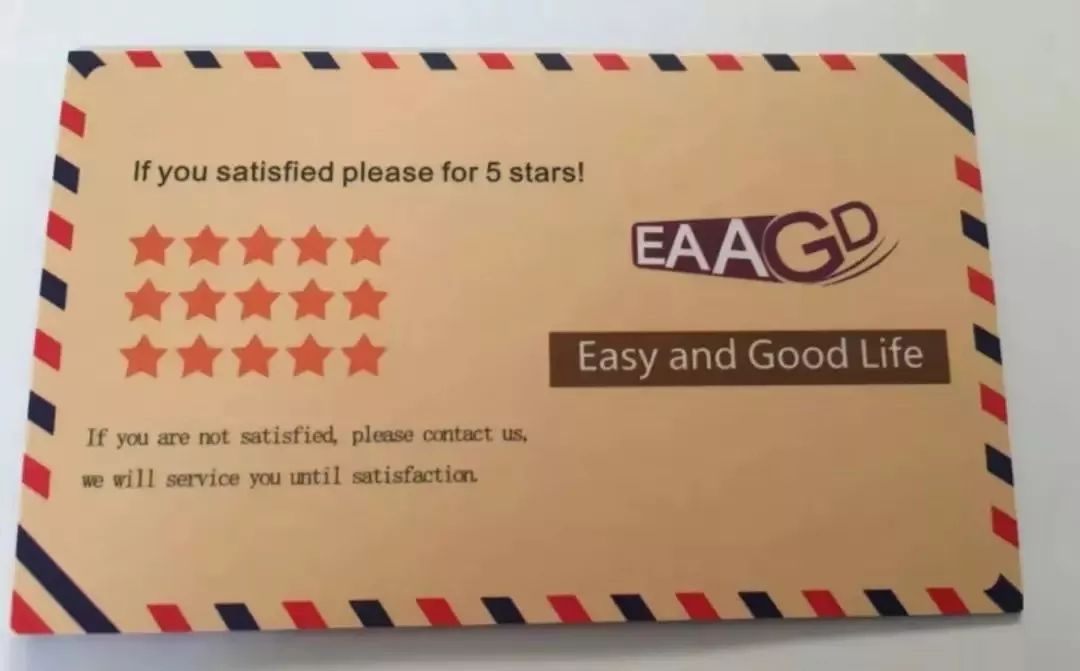

但是呢,你可以选择给他们一些小礼物或者一些小恩小惠,然后诱导他们去关注你的Facebook主页,Twitter 主页或者Facebook messenger等等,然后再去做留评或者放量的引导,虽然这样也是违规的,但是比直接把换评放在卡片上面要安全的多!例如大卖家泽宝这种模式的产品卡片,就会安全的很多:

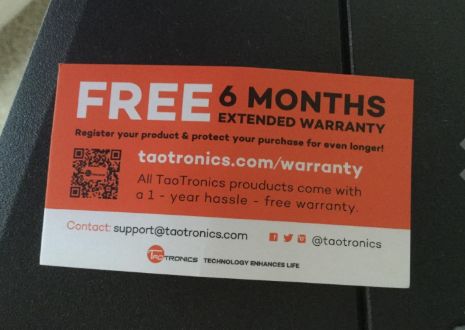
9-“A seller manipulates the ‘Helpful’, ‘Not Helpful’, or ‘Report Abuse’ features on any review on his or [her] competitor’s products.”
这一条主要是讲操纵点赞行为,以及report abuse的举报行为都是属于违规的,这一块之前有很多文章都写过,大家感兴趣的话可以好好看一看这两篇文章:《我们来聊一聊删差评服务的技术原理》; 《服务商的集体自嗨:亚马逊首页无差评的秘密》
10–“You can ask for reviews from customers who purchased your products off Amazon.”
这一条间接的说明了亚马逊一直是允许“直评”这种模式存在的,而且后续也不可能取消直评。虽然之前很多亚马逊卖家都曾经反映过直评被滥用的问题,各种取消直评的声音也是越来越大,但是感觉亚马逊也不可能取消直评的,直评和跟卖这些应该属于亚马逊体系里面的宪法级别,不会轻易改动的。
简单解释一下,直评的意思就是:只要消费者买过这个产品,即使不是通过亚马逊买的,他也可以在下面完成评价。这样是不违反亚马逊规定的,甚至说是鼓励的。虽然直评是没有VP验证购买标志的,但是直评的用处依旧挺大,而且直评一下子增加特别多也不会引起亚马逊的警觉,因为直评毕竟是和产品销量没有太大关系的,不是直接挂钩。当然这里不排除有时候一些大折扣购买的产品留下来的评价也是直评的情况,不过大折扣的产品现在可能评价逗留不了,直评都不容易了。
所以我们在这里开一下脑洞,如果同一款产品在亚马逊上面卖,也在其他平台上面卖,所有在其他平台上面买过这款产品的客户,其实都是我们的潜在可以留直评的客户,而且其他平台或者独立站不像亚马逊把控那么严,我们基本上都可以直接联系到这些买家,你可以让这些人在亚马逊同样的产品下面写一下真实的使用感受,当然可以给一些额外的激励,这种鬼佬一般也会接受的,而且又不违规。至于具体怎么聊就看各位了,所以这是一个非常好而且安全的直评获取的渠道!
11–“…you can reach out to customers by replying to their review on the product detail page and asking them to contact you through Buyer-Seller Messaging to resolve their issues. You cannot reach out to buyers via other means.”
这是最后一条了,这里主要是说你和你的买家取得联系的渠道,目前来说亚马逊允许的就是站内信渠道,以及review下面的comment渠道。除此之外,其他任何联系客户的渠道都是违反规定的,之前有些卖家通过找内部买邮箱,拿到邮箱直接去联系客户,很多客户都直接反问你是怎么知道我的真实邮箱的?这种情况只要是举报亚马逊,这个卖家账号就真的玄了
其实除了站内信以外,review下面的comment方法可以好好玩一玩,这个渠道相对来说监控没有那么严格,而且基本上也不会有任何安全隐患。具体操作方法可以参考下面这篇文章《关于亚马逊查找差评邮箱的新思路》
那么,今天关于亚马逊review这一块的TOS解析就到这里了,如果大家能够从里面得到一些思路和方法,知道哪些是雷区,哪些可以继续深挖尝试,那么也就不枉我码那么多字了。





